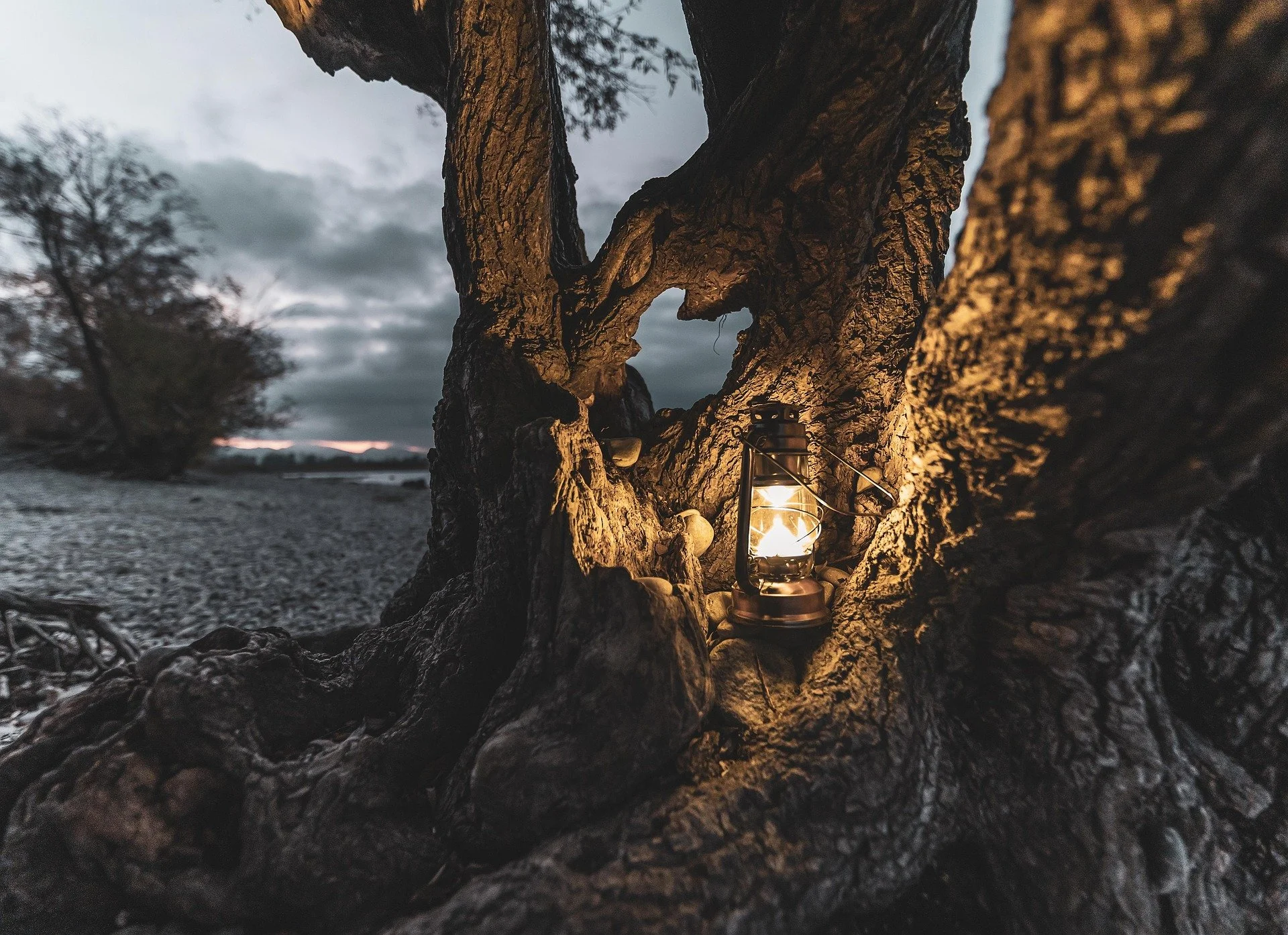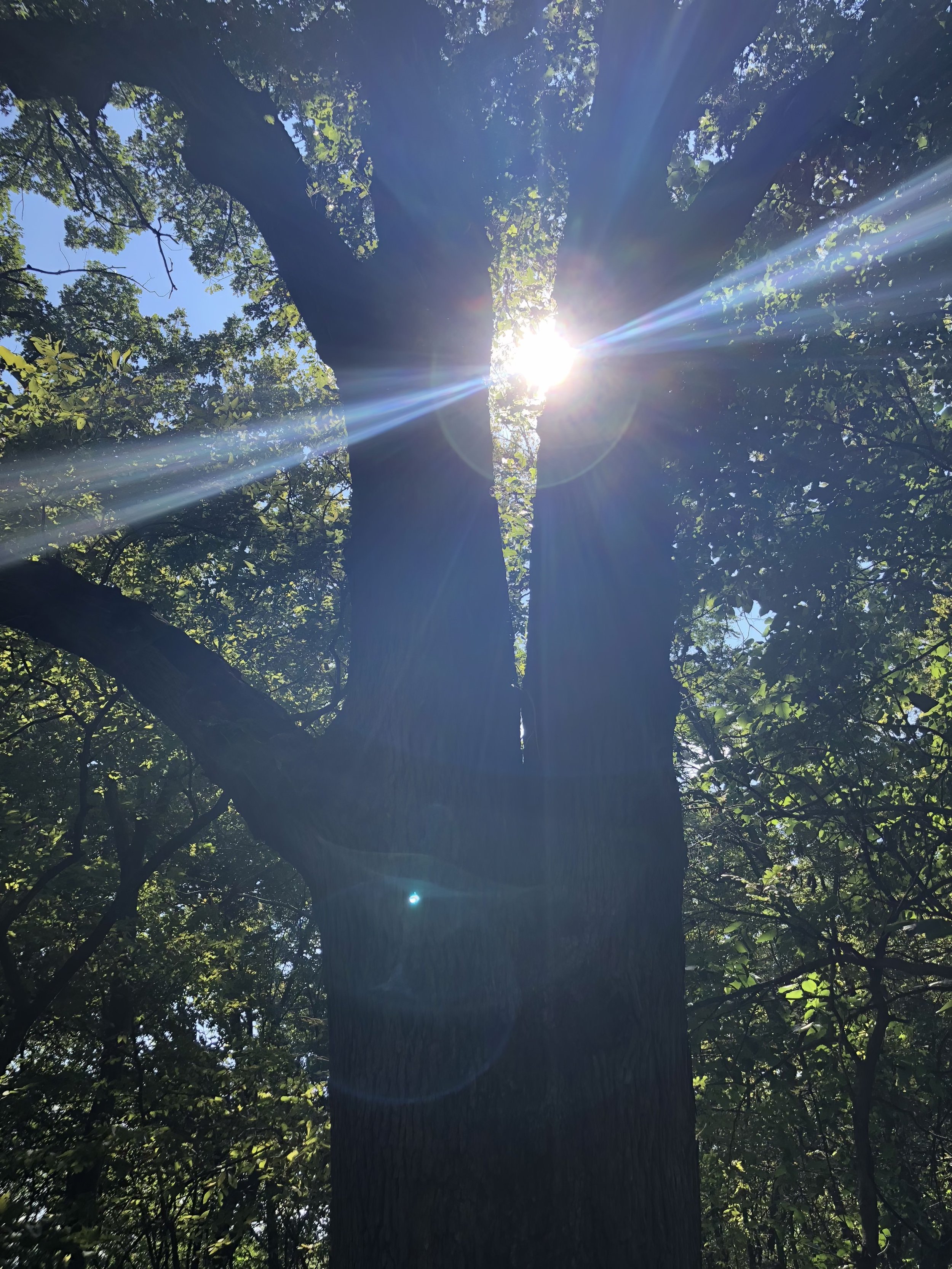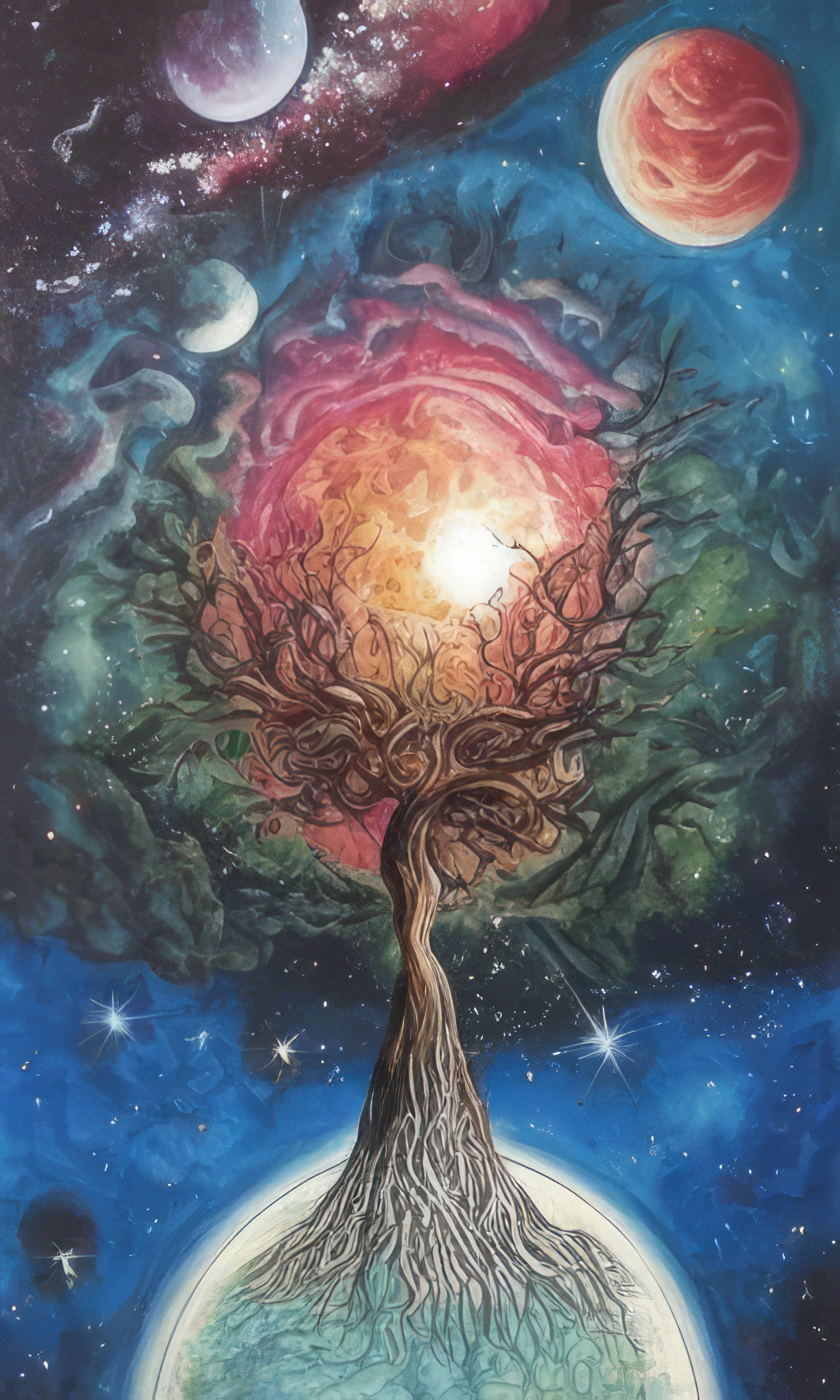What Does Leadership Look Like in New Spiritual Community?
Evolving Archetypes of Spiritual Leadership
Practicing Community – Part Nineteen
“Living spirit manifests as a dynamic interplay between, and animation of, autonomy, hierarchy and co-operation. Hierarchy here is the creative leadership which seeks to promote the values of autonomy and co-operation in a peer to peer association.” – John Heron
As I proposed in a previous article in this series, the days of the king (or queen) have passed. The time of being subjects reigned over has (mostly) passed, but we still elevate the hero or heroine, the celebrity and the guru.
We still want the great leaders who will solve our problems and set things in order. Those with the power, wisdom, and authority to make things right. A great, singular savior out there somewhere.
And at the same time, we often resist being led. We are not just followers but have our own story, our own journey, and our own sovereign realm we have to look after—our lives. We also have opinions and perspectives. The ways we think things should be and how they should be done. As we should!
So here is another prime dynamical tension in its own right: The relationship of leadership and community. It’s a complex and complicated topic. So we are invited again into the interplay rather than the extremes. It is not solved by over-emphasizing one end of the pole over and against the other.
In response to spiritual authoritarianism and leaders abusing power, there has been a strong swing in the other direction. And this is a healthy counter-balancing, moving toward more egalitarian and participatory expressions of community. However, entirely leaderless or fully self-organizing forms suffer their own significant restraints and disadvantages. The need for healthy leaders hasn’t gone away, but perhaps some of the functions and purposes of leadership are shifting.
What does an evolving, integrated approach to leadership in spiritual community look like?
“Seeing into the Evolving Future” – image from Stefan Keller
Leadership for and from Evolving Consciousness
“It is tempting to think of hierarchy and community as opposites, as one more “either-or.” But … our challenge is to think “both-and,” to find ways of inviting the gift of community within those hierarchical structures.” – Parker Palmer
Any time we are attempting to reach into a new consciousness, we will usually feel like we are trying to grasp at water. Inherently, our current understanding will struggle to really be able to take hold of it in a way that feels solid and containable, for it is, by definition, “beyond” our current understanding. And yet, we can feel it—even if just the sense of it passing through our fingers.
I certainly don’t have a firm grasp on it. I have my way that I am still learning and coming into, but I certainly don’t think it is the ultimate form or necessary type of expression that everyone needs to enact.
Rather, in the communal nature of things that are and are to come, I suspect that the leadership necessary for the days ahead will be an integration of various forms and ways of acting in complementary (not competitive) collaboration.
In this sense as well, leadership will need to be communal, integrating many of these archetypes together—which cannot be embodied entirely by a singular figure. Leadership will need to express in community, as is reflective of the actual nature of things (for we are not truly separate).
So we’ll explore several metaphors of leadership here, focusing on ones that may be especially fitting for spiritual community (and perhaps my own sensibilities as well). Some of these will relate to traditional archetypes of leadership, while others may lean into newer expressions.
“The Mother Tree” - photo by Luke Healy
The Mother Trees
In a forest, the biggest, oldest trees are the glue that hold everything together. They are hubs of wisdom, carrying the genes from previous climates and housing a vast biodiversity of life and resources. Through their deep and interconnected root system, they communicate vitality and vulnerabilities throughout the forest. Working with the vast mycelial network underground, they communicate and send nutrients through the fungal webs and filaments that spread far and wide.
Walking through a forest with sensitivity and openness, perhaps you’ve sensed these trees. Feeling the energy they carry, their depth of presence.
My wife and I once hiked our way through a grove in central Kansas, navigating spider webs and overgrowth along a creek in the plains that had given life to this pocket forest. While I traipsed ahead, she had stopped in front of one (being more open and sensitive, as she is). This great oak had grown up, fusing two trunks into the mother of this forest. We both could feel the nurture, care, and power she held for these woods.
These central hub trees help the others survive. They are the elders of the forest. In leadership for community, mother trees bear the wisdom and knowledge of generations before. They are deeply in tune with and even embody the ancestors in the here and now. This eldership may not always be strictly physical age, but also through old souls and depth of spirit.
Mother tree leadership may be a steady, solidifying presence. A strength and stability that helps the forest feel cared for and secure. It may also express in adopting intentional ways of mentoring, a sort of spiritual parenting for younger trees.
Its true power is found not in its singular strength but rather through its carrying capacity to extend and support the whole forest through the vigor of the mycelial network interspersed throughout.
“Autonomy that is rounded and enriched by a profound kind of inner animation that develops and flourishes only in felt interconnectedness, participative engagement, with other persons, and with the biodiversity and integral ecology of our planet…a whole collaborative regeneration of our world through co-creative engagement with the spirit that animates it and us.” – John Heron
“The Mother Tree from a Distance” – photo by Luke Healy
The Guides
If Mother Trees are stabilizing forces, the guides of community leadership are more about movement. They are the companions along the way. Sometimes leading out front, but more often helping navigate the journey from within the midst of the group.
Guides are not necessarily experts, but they generally have an understanding of what is necessary for the journey and how to reach the destination ahead—even if they haven’t been there before themselves. In this sense, they have a vision for what is ahead. They can see further and call forth what is needed now in order to get there.
Guides are highly relational. They don’t just mark out the path from up ahead, expecting the party to just follow along from behind. Rather, they engage with everyone in the pack, sensing their needs, strengths, and weaknesses. They know who needs more support and in what way, and they are ready to give it. Sometimes challenging, sometimes carrying more for another.
In a mystical sense, a guide is also a spiritual navigator, even receiving maps and directions from the realms beyond. They can follow the celestial markers in the heavens above and in the inner constellations of deep intuition. They hear from the spiritual masters who guide us still. They are guided themselves by God-Beyond-Us, God-Beside-Us, and God-Being-Us.
Last week, we used the metaphor of a conductor, one who hears all the notes, paces the tempo, and attunes to the blend of sounds playing together. That is another form of guide.
The guide goes on the entire journey with the group. They are not focused on reaching the destination themselves (like the pioneer) but on making sure everyone gets there together. As such, they call forth everyone to make the journey, drawing upon the resources and capacity of each one to get there.
“Ironically, we often resist leaders who call upon our resourcefulness. We find it threatening when leaders say, “I am not going tell you how to do this, let alone do it for you, but I am going to create a space in which you can do it for yourselves.” Why threatening? Because many of us have been persuaded by institutions ranging from educational to industrial to religious that we do not have the resources it takes to do things, or even think things, for ourselves (which, to the extent that we believe it, expands an institution’s power over our lives). Many people have been convinced of their own inadequacy, and any leader who wants to invite them into a community of mutual resourcefulness must see this invisible wound and try to heal it.” -Parker Palmer
The Stewards
“Leadership for community consists in creating, holding, and guarding a trustworthy space in which human resourcefulness may be evoked.” – Parker Palmer
A steward is not a ruler but one who has care over a community. Yes, over. Again, we do not need to fear some healthy hierarchy and the value of roles for communal governance. But a steward does not dominate from a throne. They do not have sole ownership over the realm.
Stewards work on behalf of someone or something else. They don’t lead because it belongs to them but because they care deeply for the well-being of the community. They have functions and tasks that are theirs to do, and they do them from a place of service.
This is a way of servant leadership, concerned with the well-being of all. Power is shared, and decisions come out of relationship and sensitivity to the needs of the community as felt and expressed by all. It is collaborative rather than directive. It is hands-on and co-enactive.
Rather than needing to serve the royalty (the pastor, the CEO, the president), the community is free to use its resourcefulness in creativity for the good of the whole. The direction of the flow isn’t toward the top but with and for one another.
The metaphor of the master gardener fits in here. They care for the garden in order to see it grow, tending to what needs the most assistance at the time. Sometimes tilling new ground, sometimes allowing things to grow a bit wild. Watering regularly. Knowing what is needed for the overall health of the full garden. And more. All for the sake of life thriving in beauty and goodness.
Stewards can also be spiritual parents for the community as a whole. Much like a parent, the child is under their care but does not ultimately belong to them. They help them grow up, give them what they need, teach them how to live well. This is more specifically for the communal life as a whole rather than individuals. The organism of the community needs guidance and parental care, especially in its younger years. Again, this is not referring to individuals who are adults with full autonomy but the collective. Leaders must be careful not to infantilize but to evoke the spiritual becoming of a community, especially in its early stages.
The Curators
Curators are those who gather and collect, who bring together the elements and aspects of a community—including people.
They help organize the energies that are at play, channeling and directing the collective forces of communal life.
They are developers, enhancing and elevating the beauty and goodness that is alive in all. They foster and enable the pathways of interconnection and co-creation.
In the communal spirit, they are not the sole master over the entirety of the creative life—but are keepers of the mystic’s guild. Welcoming a diversity of mediums and expressions that are drawing upon the energy of evolution and becoming. They invoke creativity and experimentation. And they evoke inquiry, practicing with various studies as creative research, prototyping and developing new forms and expressions.
Community curators see not just a singular work of art or even a singular wing of the museum, but the entire collection of beauty and expression. Their over-sight and vision give them a sense of the whole and how variance complements and expands authentic expression and deeper creativity.
What other metaphors and expressions of leadership have you seen and experienced?
What are ways you are trying to enact new spiritual leadership?
What other archetypes and forms are necessary?
Embracing Leadership
“Contrary to popular opinion, community requires leadership, and it requires more leadership, not less, than bureaucracies. A hierarchical organization, with its well-defined roles, rules, and relationships, is better able to operate on automatic pilot than is a community, with its chaotic and unpredictable energy field. Leadership for community requires authority, a form of power that is freely granted to the leader by his or her followers. Authority is granted to people who are perceived as authentic, as authoring their own words and actions rather than proceeding according to some organizational script. So the authority to lead toward community can emerge from anyone in an organization.” – Parker Palmer
Religious leadership has often been enacted in ways that restrict and “bind back” (the literal meaning of the word “religion”) the community. More and more people are rejecting being bound in such a way. They are unfurling and finding release from the constrictive and confining shackles of institutional religion that too often seeks to keep them in order more than bring them into new life.
And after deconstruction and differentiation, after freedom and release, we are very often especially sensitive to not subjecting ourselves to that restraint in such a way again. And for very good reasons! Yet, we need community, and we all need help along the way forward. A leader is simply someone who helps others move forward on the evolving journey.
And we all have ways we can help. We all have leadership capacities and natural authority in certain areas of our lives. Ways that we have developed and grown that others have not. And we have areas where we are weaker and underdeveloped. We want to be led by those who are stronger in these places—not those who simply hold a position, but also not just anyone.
In evolving leadership, we can move beyond pure hierarchy and total egalitarianism, integrating many forms and expressions of leadership in the diverse field of community. We can draw upon the extensive resourcefulness in our midst, recognizing and utilizing the variety of proficiencies, experience, knowledge, giftings, and passions among us.
When people come into a community for the first time, there is a natural propensity to look for the leader. To ask, “Who is in charge here?”
And the answer is that, in a sense, we all are. We are all ordained in our various ways.
And some are anointed to particular roles of service. Some are called to leadership, expressing in these new ways.
We are creating the new pathways of evolving leadership as we forge ahead into new territory. We are receiving from spirit what will be needed in the days ahead. We are learning to embody new spiritual leadership.
May we all go forth in peace to serve one another in love.
Practicing Community:
Reflect on your calling and way of embodying spiritual leadership in your life, even if it is just for yourself. What are the archetypes and metaphors that express how you are called to lead (or who you feel drawn to follow)?
Embrace your form, your expression, your holy anointing for the work of God in the world today. How can you enact this in your spiritual community?








